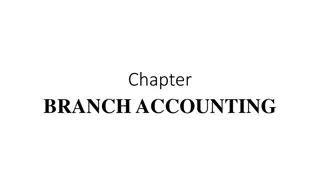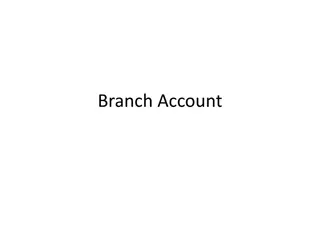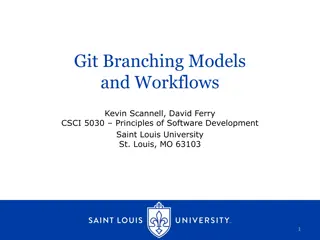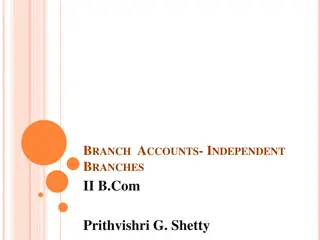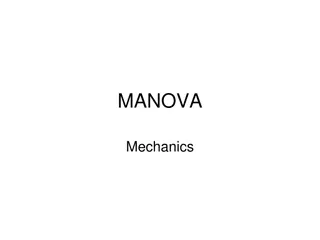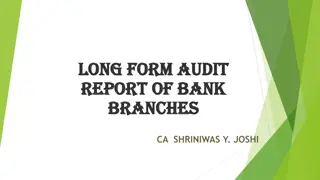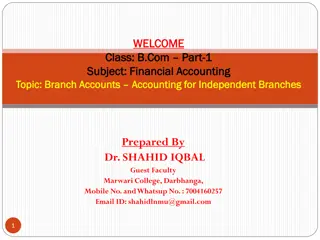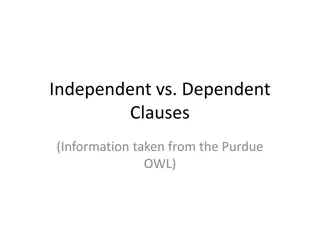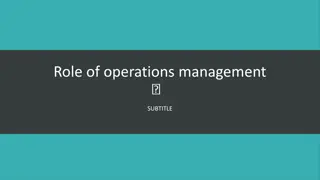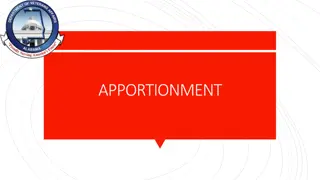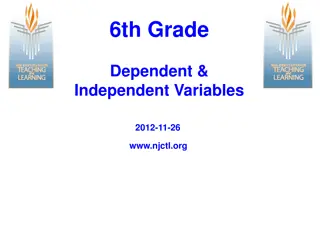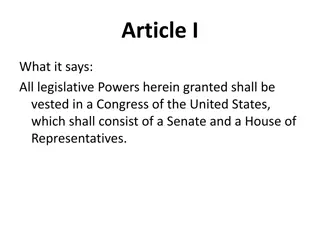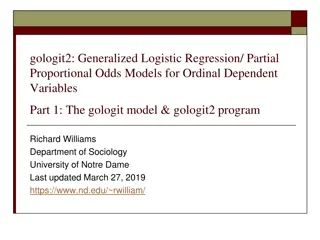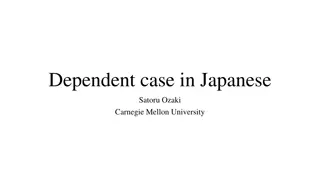Understanding Dependent Branches in Business Operations
In any business undertaking, as the business expands, it often establishes branches to market products over a wider territory. Dependent branches rely on the head office for supply of goods and cash, and do not maintain separate accounts. This article explores the types of branches, features of dependent branches, branch expenses, and methods of maintaining accounts under dependent branches.
Download Presentation

Please find below an Image/Link to download the presentation.
The content on the website is provided AS IS for your information and personal use only. It may not be sold, licensed, or shared on other websites without obtaining consent from the author. Download presentation by click this link. If you encounter any issues during the download, it is possible that the publisher has removed the file from their server.
E N D
Presentation Transcript
In any business undertaking as the business grows it often establishes branches in order to market its products over a large territory. Expansion of business activities may result in opening of new parts or divisions. Under the same management different parts or divisions located at different places are known as branches. The office/undertaking which operates in different places are called branches, the one which controls these operations is called as Head office.
Types of Branches: Dependent branches Independent branches Foreign branches 1. 2. 3. Dependent branches: These branches depend on head office, they don t maintain separate set of books of account. They depend on H.O for the supply of goods. Features: Depends on H.O for the supply of goods and cash for day to day expense. They sell only goods which are supplied by H.O, they are not allowed to purchase from outsiders. 1. 2.
3. Branch expenses that are regular in nature, i.e., shop rent, salary, advertisement etc are paid by H.O 4. Petty expenses, carriage etc are paid by the branch out of petty cash balance. 5. Sales can be made on cash or credit. 6. All accounts of branches are maintained by H.O. 7. Branch has to remit their cash collections to the H.O immediately. 8. Goods are supplied by H.O at cost price or invoice price. 9. It does not maintain separate set of books of accounts.
Methods of maintaining accounts under dependent branches: Debtor System: Under this system the H.O opens only one account for one branch called Branch A/c Stock and Debtor System: Under this system H.O opens the following 5 accounts: a. Branch Stock A/c b. Branch Debtors A/c c. Branch Expenses A/c d. Goods sent to branch A/c e. Branch adjustment A/c a. b. Final Account System: Under this system H.O opens Branch trading and profit & loss A/c Branch A/c


